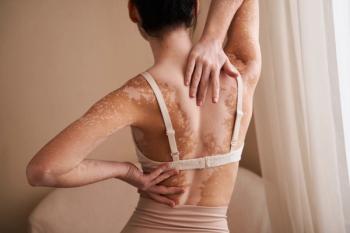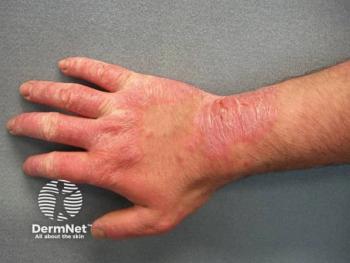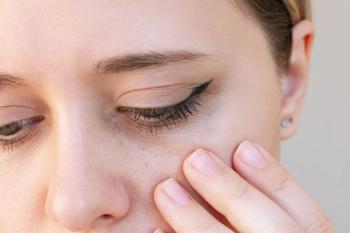
- Dermatology Times, May 2025 (Vol. 46. No. 05)
- Volume 46
- Issue 05
AAD Partners With SOCS to Launch Inclusive Image Library
Key Takeaways
- The Clinical Image Collection aims to improve dermatologic education and patient care by showcasing diverse skin tones in clinical images.
- The initiative addresses gaps in training materials, enhancing diagnostic accuracy and inclusivity in dermatology.
The Clinical Image Collection enhances dermatologic education by providing diverse images of skin conditions, promoting inclusivity and accurate diagnoses across all skin tones.
In a pioneering effort to advance dermatologic education and patient care across all skin types, the American Academy of Dermatology (AAD), in partnership with the Skin of Color Society (SOCS), has launched the Clinical Image Collection—an ever-growing, meticulously curated database of dermatologic images reflecting the full spectrum of skin tones. With a mission of addressing long-standing gaps in clinical education and training materials, this program sets a new standard for inclusivity and diagnostic accuracy in dermatology.
A Vision Rooted in Need
The Clinical Image Collection was created to improve diagnostic skills, medical training, and patient care. In a recent interview with Dermatology Times, Susan Taylor, MD, FAAD, founder of the Skin of Color Society, described the motivation behind the initiative: “We recognized at the academy that there were gaps. There isn’t a wide range of images, from light to medium to dark skin, that can be used for educational purposes, that can be used in lecturing, that can be used to hone your clinical skills and be able to make the right diagnosis, and to use for residents and medical students in training.”
This foundational awareness of underrepresentation in educational materials led to a partnership between the AAD and SOCS to build a repository of high-quality, peer-reviewed clinical photographs. These images span various conditions—from common skin diseases like acne and eczema to rare disorders—and showcase their manifestations in diverse skin tones.
Nada Elbuluk, MD, the current president of the SOCS, emphasized the significance of the collaboration: “One of the challenges related to finding imagery is finding images in darker skins.” This scarcity has historically limited dermatologic training and has led to diagnostic inaccuracies, especially in underrepresented patient populations.
Rapid Growth and Stringent Review
Since its launch in late February 2025, the project has grown rapidly. “In probably 6 weeks, when we launched this…we have about 800 images that we have acquired and posted,” Taylor shared. The collection continues to grow with no fixed end point in sight. “The goal is to one day have the largest, most robust collection of images that exist,” Taylor added.
Elbuluk underscored the importance of quality control and ethics: “We are having a group of board-certified dermatologists who have the expertise, who are reviewing everything submitted and making sure that this is done in a very ethical, highly scientific way.” She added, “We want to make sure that these are high-quality images, that proper consent has been obtained... and that the images have been vetted.”
Another hallmark of the project is respect for contributors: “The credit and rights to the photo are still retained by the person who contributes them,” Elbuluk said. “We didn’t want people to feel that...by sharing—which is really an altruistic gift—they were giving up ownership.”
Promoting Equity Through Education
A core feature of the collection is its commitment to showcasing how skin disorders may present differently depending on skin tone. For instance, erythema, which appears as redness on light skin, may manifest as hyperpigmentation in darker skin. These differences are often subtle and can be overlooked without proper training.
“We want to see as many different skin colors represented in this image collection as possible,” Elbuluk stated. “Some of the conditions can look very different depending on the person’s baseline skin color.”
This diversity is critical for educating all clinicians—from students to seasoned professionals. “Some people train in places where they don’t get to see people of different skin colors,” she noted, emphasizing that the collection can fill these exposure gaps throughout a physician’s career.
Practical Applications
One of the collection’s most powerful aspects is its flexibility. Whether an educator is preparing a lecture, a researcher is designing a clinical trial, or a practitioner is seeking a diagnostic comparison, the image library is a valuable resource.
“There are times when enrollment in clinical trials can be a challenge because the investigator doesn’t recognize the disorder in different skin tones,” Taylor explained. “You can go into the image collection and do a search and find those images, so you can learn all of the different nuances in presentation.”
Elbuluk envisions continued evolution: “The goal is just creating a really robust, really sound scientific and ethical clinical database of images... it could be used in multiple different capacities.” She also noted the potential for widespread educational use: “It goes beyond just the medical student level...there’s education to residents... and then beyond that, educating our colleagues at conferences.”
A Lasting Impact
Though still in its early stages, the Clinical Image Collection is already a highly valuable tool. Taylor shared her enthusiasm: “You go, ‘Oh wow, that’s a great one!’ Because even though most of us take pictures of our patients, you’re not exposed to everything.”
Elbuluk echoed the sentiment, calling the initiative “a great example of how two societies who share overlapping missions can come together to really move something forward that advances our specialty.”
It reflects a broader movement toward equity in health care training and delivery, grounded in the understanding that accurate, diverse educational resources benefit all patients. “Having a free resource available...where you can use these images for education is really necessary,” Elbuluk concluded.
Access and Contribution
Members of both the AAD and SOCS have access to the Clinical Image Collection. Clinicians are also encouraged to contribute to the growing database.
By accurately documenting skin conditions across all skin tones, the Clinical Image Collection is not only closing gaps in medical education but also opening doors for better diagnosis, broader research participation, and, ultimately, more equitable care.
Articles in this issue
Newsletter
Like what you’re reading? Subscribe to Dermatology Times for weekly updates on therapies, innovations, and real-world practice tips.



















